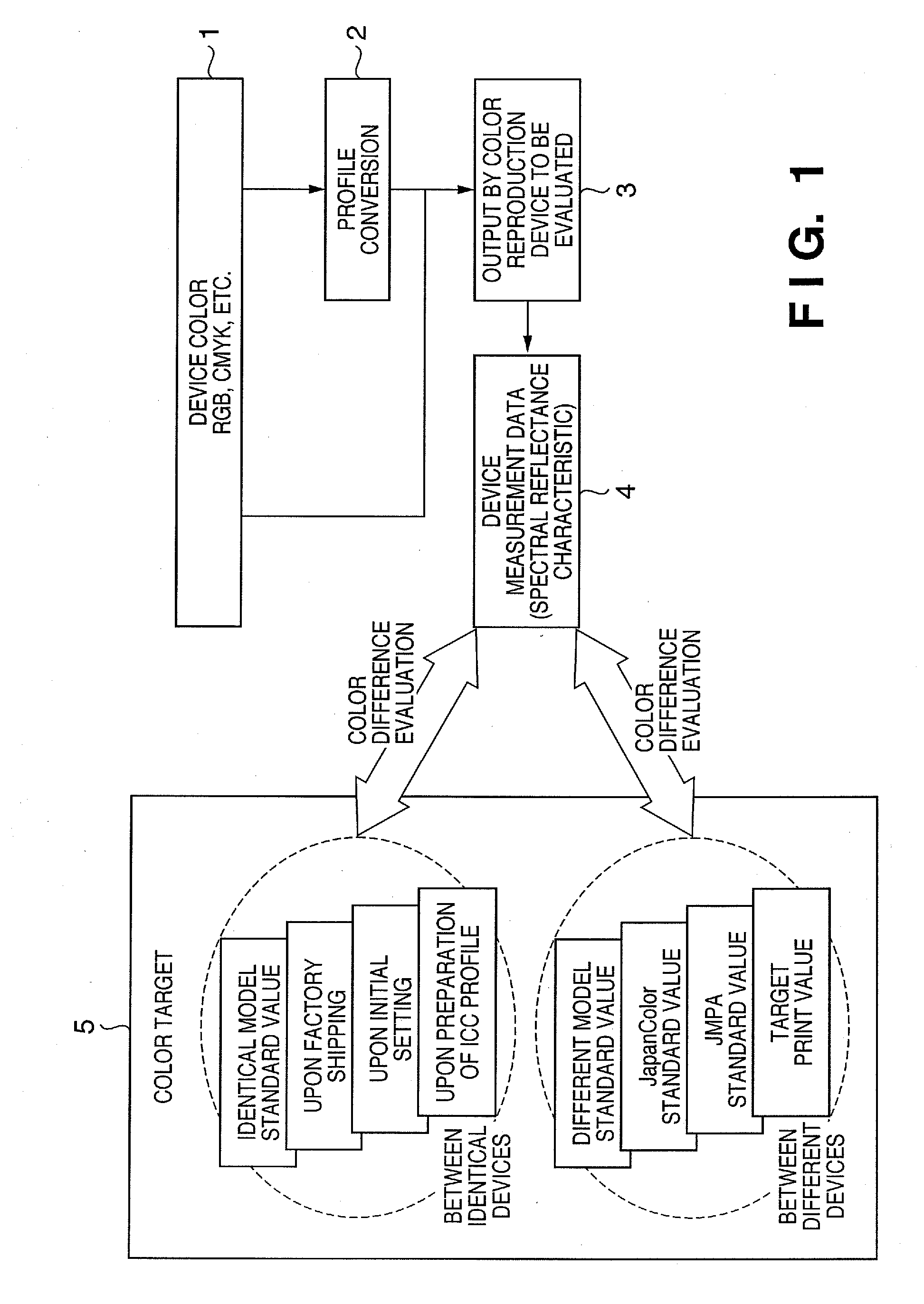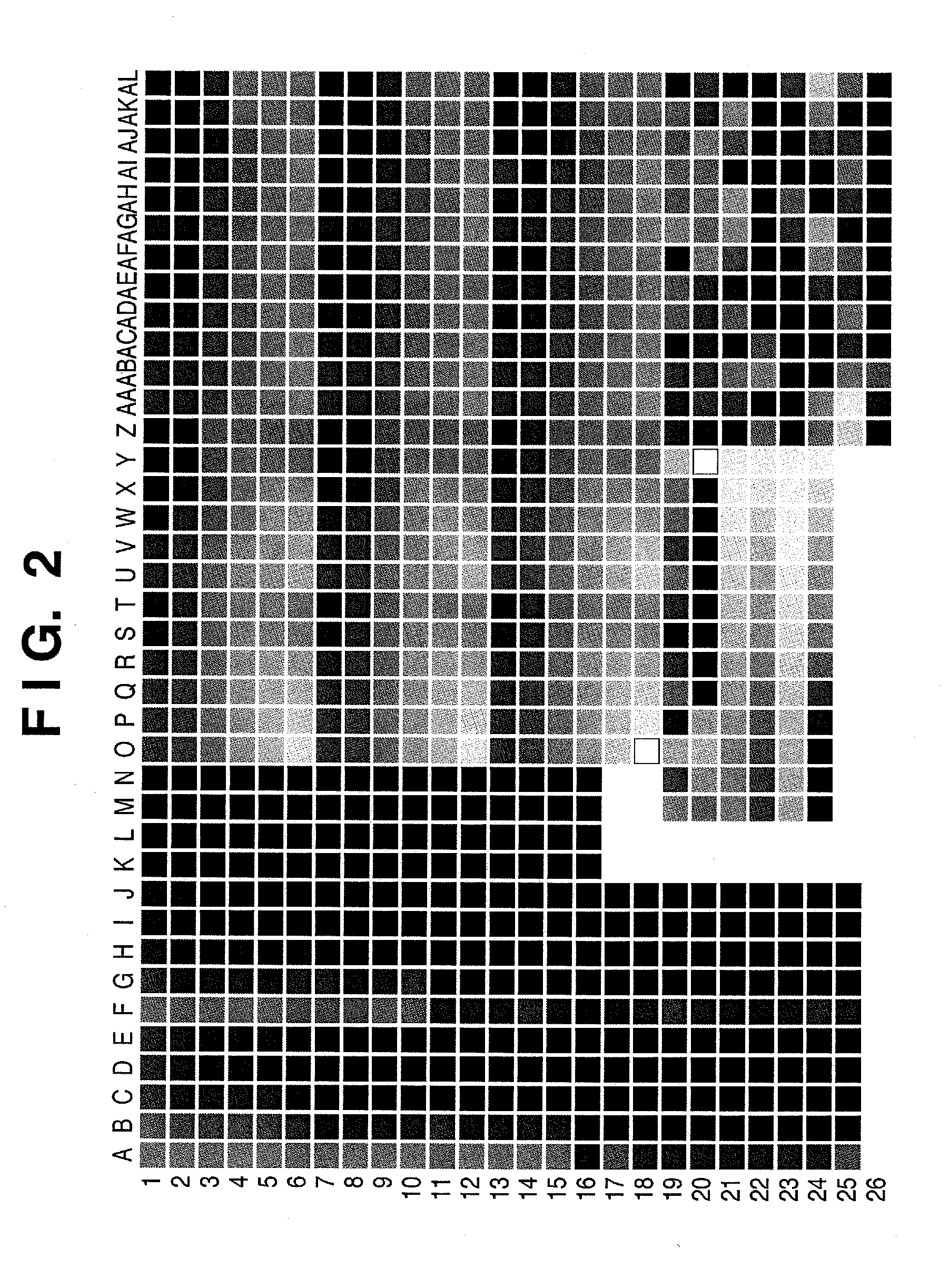Color processing method and apparatus thereof
a color processing and printing method technology, applied in the direction of instruments, spectrometry/spectrophotometry/monochromators, optical radiation measurement, etc., can solve the problems of inability to achieve zero color difference in page image, and uneven scanning of printheads
- Summary
- Abstract
- Description
- Claims
- Application Information
AI Technical Summary
Problems solved by technology
Method used
Image
Examples
first embodiment
[0039] [Concept of Color Matching Evaluation]
[0040]FIG. 1 shows the concept of color matching evaluation.
[0041] Color matching evaluation is done as follows. That is, a device color 1 of RGB values, CMYK values, or the like is input to a color reproduction device to be evaluated (after application of color conversion 2 using an ICC profile if necessary). An output 3 (print result or display) of the color reproduction device undergoes colorimetry (its spectral reflectance characteristics are preferably measured). Then, a difference (color difference) between a calorimetric value 4 and that of a color target 5 is evaluated as color matching precision.
[0042] The color matching evaluation includes two concepts. The first concept is the degree of matching of colors between identical devices shown in the upper left part of FIG. 1, and the second concept is that of colors between different devices which have printed matter or the like as a target shown in the lower left part of FIG. 1.
[...
second embodiment
[0087] Image processing according to the second embodiment of the present invention will be described hereinafter. Note that the same reference numerals in the second embodiment denote the same parts as in the first embodiment, and a detailed description thereof will be omitted.
[0088] [Overview]
[0089] The color matching evaluation of the first embodiment is suited to confirm the homogeneity in page image, and to determine whether or not to adjust the color reproduction device. The color chart of ISO12642 covers the CMYK color space, and is excellent in confirming the color matching precision of the entire gamut.
[0090] However, depending on the application of the printed matter, the tendencies of all colors need not be determined, and it is often important to precisely learn the tendencies specific interest colors. The interest colors include, e.g., a corporate color, flesh color of a model, process black (black obtained by mixing C, M, and Y) which is hard to reproduce, and the li...
third embodiment
[0113] Image processing according to the third embodiment of the present invention will be described hereinafter. Note that the same reference numerals in the third embodiment denote the same parts as in the first and second embodiments, and a detailed description thereof will be omitted.
[0114] [Overview]
[0115] The first and second embodiments have explained an example in which the homogeneity in page image evaluation chart defined by the tone values of C, M, and Y=20% is output. However, even when the tone values=20% are set, the output density (the relationship between the tone values and density; to be referred to as “tone reproducibility” hereinafter) changes within the range from about 0.1 to 0.4 depending on the models, print schemes, and the like of printers. This change does not pose any problem since the target exists in the calculation of the color matching precision. However, upon evaluating the homogeneity in page image, since the density at the central portion is used ...
PUM
 Login to View More
Login to View More Abstract
Description
Claims
Application Information
 Login to View More
Login to View More - R&D
- Intellectual Property
- Life Sciences
- Materials
- Tech Scout
- Unparalleled Data Quality
- Higher Quality Content
- 60% Fewer Hallucinations
Browse by: Latest US Patents, China's latest patents, Technical Efficacy Thesaurus, Application Domain, Technology Topic, Popular Technical Reports.
© 2025 PatSnap. All rights reserved.Legal|Privacy policy|Modern Slavery Act Transparency Statement|Sitemap|About US| Contact US: help@patsnap.com



